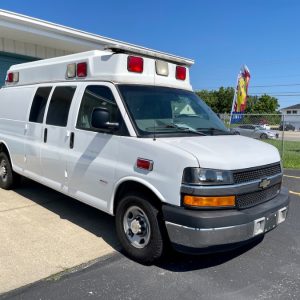How much does an ambulance cost ;
Ambulance services provide emergency medical transportation to hospitals or medical facilities. An ambulance is equipped with lifesaving equipment and staffed by emergency medical technicians (EMTs) to provide medical care while transporting patients. Ambulance services are a vital component of the healthcare system.
However, ambulance rides can be extremely expensive, often costing thousands of dollars for even short trips. With the high costs, many patients are surprised by ambulance bills and struggle to pay them. Understanding the typical costs of ambulance services, what factors affect the price, and how to reduce costs is important. This article will provide an overview of ambulance costs, including ground and air transport, insurance coverage, and ways to lower your bill. Knowing what to expect for ambulance fees can help you financially prepare and budget for this critical medical service.
Ground Ambulance Costs
The cost of a ground ambulance ride can vary greatly depending on the level of service, location, and other factors. Here are some average costs:
- Basic Life Support (BLS) ambulance – This is for non-emergency transport or basic care during transport. The average cost ranges from $224 – $2,200 per trip.
- Advanced Life Support (ALS) ambulance – This is for emergency transport and advanced medical care like IV fluids, medications, defibrillation, etc. The average cost ranges from $700 – $8,000+ per trip.
- Mileage fee – Most ambulance companies charge per mile traveled when transporting a patient. This ranges from $10 – $50 per mile.
- Additional fees – Other fees may be charged for oxygen, medications, night/holiday transport, etc.
The total ground ambulance cost depends on factors like:
- Location – Urban and rural areas can vary greatly in cost. More remote areas often charge higher rates.
- Distance traveled – The farther the transport, the higher the mileage fee.
- Medical needs – ALS care costs more than BLS care. Additional treatments, medications, etc. add costs.
- Insurance coverage – Rates may be higher for uninsured patients versus insured ones.
- Provider – Hospital-based, municipal, private, and volunteer ambulances can have different rate structures.
Knowing the average ambulance costs in your area can help you comparison shop and budget for potential emergency transport. But often patients have little choice which ambulance service responds to a 9-1-1 call.
Air Ambulance Costs
Air ambulances, which include both helicopters and fixed-wing aircrafts, are significantly more expensive than ground ambulances. The average cost for a helicopter air ambulance can range from $12,000 to $25,000 per flight. Fixed-wing air ambulances are generally less expensive, with an average cost of $6,000 to $12,000 per flight.
There are several reasons why air ambulances have such high costs:
- Advanced medical teams and equipment – Air ambulances require specially trained medical crews like critical care nurses and paramedics. They also need expensive medical gear to treat patients mid-flight. This advanced staffing and equipment increases costs.
- Aviation costs – The purchase and maintenance of aircrafts, fuel, hangar facilities, pilot salaries, and aviation insurance all contribute to high operating expenses. Air ambulances have far greater aviation costs compared to ground units.
- Limited providers – There are fewer air ambulance providers compared to ground, so they lack competition to drive down pricing. This quasi-monopoly environment enables air ambulance companies to charge higher rates.
- High demand – The need for air ambulances to transport critically ill or injured patients to emergency facilities is increasing. This growing demand allows providers to charge more.
- Minimal regulation – Air ambulance pricing is not well regulated, unlike ground ambulance fees. This lack of oversight enables air transport companies to set their own high rates.
The unique capabilities of air ambulances come at a steep price. For a patient needing urgent transport to a trauma center, the costs are justified. But the lack of price competition and transparency has led to inflated prices that can devastate uninsured and underinsured patients.
Ambulance Membership Programs
Ambulance membership programs like Ambulnz provide an alternative way to cover ambulance costs. For a monthly or annual fee, these programs provide coverage for emergency ambulance transportation up to a certain limit.
The fees for ambulance membership programs typically range from $50 to $100 per year for an individual, or $100 to $150 per year for a family. In return, you get fully or partially covered ambulance transportation in emergency situations. Ambulnz, for example, covers up to $2,500 per trip for their basic membership.
These programs can be a cost-effective option if you make frequent use of ambulance services or want the peace of mind of having ambulance costs covered. They may also cover ancillary fees like mileage charges. However, ambulance membership programs have coverage limits, so major services may result in out-of-pocket expenses beyond what is covered.
For most healthy individuals who rarely need an ambulance, these programs may not provide enough value to justify the membership fee. But for those at higher risk or who live far from emergency medical facilities, having an ambulance membership can provide financial protection and peace of mind. Overall, these programs offer an affordable way to mitigate the unpredictable costs of ambulance services.
Insurance Coverage
What ambulance costs are covered by insurance varies greatly depending on your specific health insurance plan. Most health insurance plans provide some coverage for emergency ambulance transportation, but the details can differ.
Medicare Part B covers 80% of the Medicare-approved amount for emergency ambulance transportation when medically necessary. This applies to ground ambulance and air ambulance services. Medicare beneficiaries are responsible for the remaining 20% as coinsurance. Some Medicare Supplemental (Medigap) plans may help cover the 20% coinsurance.
Medicaid also provides coverage for emergency ambulance services when medically necessary. Coverage varies by state Medicaid program. Some state Medicaid programs only cover ground ambulance, while others also cover air ambulance. There are often copays required.
A major concern with ambulance coverage is using an out-of-network provider. Many health insurance plans only cover in-network ambulance providers. Using an out-of-network ambulance service often leaves patients with much higher out-of-pocket costs. With emergencies, you don’t always have the ability to choose an in-network ambulance company. But this is an important consideration when reviewing plan details and coverage.
Payment Options
Paying for an ambulance ride can be challenging, especially if you’re facing an unexpected medical emergency. Here are some tips on payment options:
Paying Out-of-Pocket
If you don’t have health insurance or your insurance does not cover ambulance transportation, you’ll likely need to pay the ambulance bill yourself. Ambulance companies may offer a self-pay discount if you can pay the entire bill upfront. You can ask for an itemized bill and negotiate the total charges.
Payment Plans
Most ambulance companies allow you to set up a payment plan to pay off the bill in installments over time. You’ll need to contact the billing department to discuss payment plan options. The payment schedule and down payment amount will vary.
Financial Assistance Programs
If paying for an ambulance would cause financial hardship, ask the ambulance company about financial assistance programs. Some may offer charity care or sliding scale discounts based on your income and expenses. Non-profit hospitals often have financial assistance for emergency services. You may need to provide documentation to qualify.
Some additional options are applying for state and local assistance programs, setting up a crowdfunding campaign, or negotiating a discount for prompt payment. With planning and perseverance, you can find a way to pay off your ambulance bill.
Reducing Ambulance Costs – How Much Does An Ambulance Cost
Taking an ambulance can be extremely expensive, so it’s important to consider ways to reduce costs if possible. Here are some tips:
- Consider taking an Uber or Lyft instead of an ambulance for non-life-threatening situations. While an ambulance will provide medical care en route, rideshares can be a much more affordable option for transport to the hospital. Assess the severity of the medical situation and opt for a rideshare when appropriate.
- Negotiate costs ahead of time if possible. Some ambulance companies may be willing to charge lower rates for non-emergency transport. Discuss options with them in advance.
- Avoid unnecessary ambulance calls. Only call 911 for medical emergencies that require ambulance transport and assistance. For non-urgent situations, find other forms of transportation to get to the doctor or hospital.
- Check if your health insurance covers any portion of ambulance fees. While coverage varies, some plans provide at least partial payment for medically necessary ambulance transportation.
- Ask about membership programs. Some ambulance companies offer annual membership fees that cover all or a portion of your ambulance fees for the year. This can save money if you require multiple ambulance rides.
- See if you qualify for any assistance programs. Those with low incomes or in certain government assistance programs may get help with ambulance bills.
With sky-high ambulance fees, it’s important to use these services judiciously and explore ways to reduce costs when possible. Avoiding unnecessary rides and negotiating prices can help trim your ambulance bills.
Average Cost by State – How Much Does An Ambulance Cost
The cost of an ambulance ride can vary significantly depending on which state you live in. Here’s a look at the average cost of a ground ambulance ride by state:
| State | Average Cost |
|---|---|
| Alabama | $800 |
| Alaska | $1,233 |
| Arizona | $1,400 |
| Arkansas | $933 |
| California | $1,300 |
| Colorado | $1,250 |
| Connecticut | $1,050 |
| Delaware | $925 |
| Florida | $1,100 |
| Georgia | $950 |
| Hawaii | $1,550 |
| Idaho | $1,030 |
| Illinois | $1,800 |
| Indiana | $1,100 |
The most expensive states for an ambulance ride are Illinois with an average cost of $1,800, followed by Hawaii at $1,550. The least expensive states are Delaware at $925 on average and Alabama at $800.
As you can see, location plays a major role in determining ambulance fees. Rural and urban areas also tend to have different costs within the same state. But this table gives you a general idea of the state-by-state variation.
Factors That Affect Cost
The cost of an ambulance ride can vary significantly depending on several key factors:
- Level of service (BLS vs ALS) – Ambulances can provide either basic life support (BLS) or advanced life support (ALS). ALS ambulances are staffed by paramedics and provide more advanced medical care, so they typically cost more than BLS ambulances which are staffed by EMTs.
- Distance traveled – The farther an ambulance has to transport you, the more it will cost. Longer transport distances take more time and resources.
- Location (urban vs rural) – Ambulance services in rural areas often have higher operating costs due to the extra distance they must cover between calls. This means rural ambulance rides usually cost more than urban ones.
- Medical interventions performed – The medical treatment you receive en route also affects the total bill. More intensive interventions like starting an IV or administering medication will increase the ambulance fees. Simple transports without any treatments will be cheaper.
The specific items billed and billing rates also vary between ambulance providers. But in general, the level of service, mileage, location, and medical care given have the biggest impact on the final cost of an ambulance ride. Knowing these cost factors can help you estimate potential ambulance fees in your area.
Conclusion
Ambulance transportation can be extremely expensive, with costs ranging from a few hundred dollars for basic emergency ground transportation to tens of thousands of dollars for an air ambulance. Key points on ambulance costs include:
- Ground ambulance services generally cost between $300-$3,000 per trip on average, depending on the level of care needed and mileage. Emergency transports usually cost $500-$1,500.
- Air ambulance services are much more costly, with prices ranging from $10,000-$60,000 per flight on average. Longer distances and a higher level of care can drive costs above $100,000.
- Ambulance membership programs like AirMedCare Network can help reduce costs for air ambulance services with an annual membership fee.
- Health insurance plans often cover some ambulance costs, but patients may still be responsible for deductibles, copays, and any amounts beyond what insurance covers.
- Without insurance, patients may need to pay the full ambulance bill out-of-pocket, negotiate discounts, set up payment plans, or rely on financial assistance programs.
- Ways to potentially lower ambulance costs include using ground transportation when possible, verifying insurance network coverage for air ambulances, and avoiding unnecessary ambulance use for non-emergencies.
The high price tag for ambulance transportation, especially air ambulances, underscores the need to be aware of costs and plan ahead when possible. But in medical emergencies, the priority is getting life-saving care quickly and safely.





































